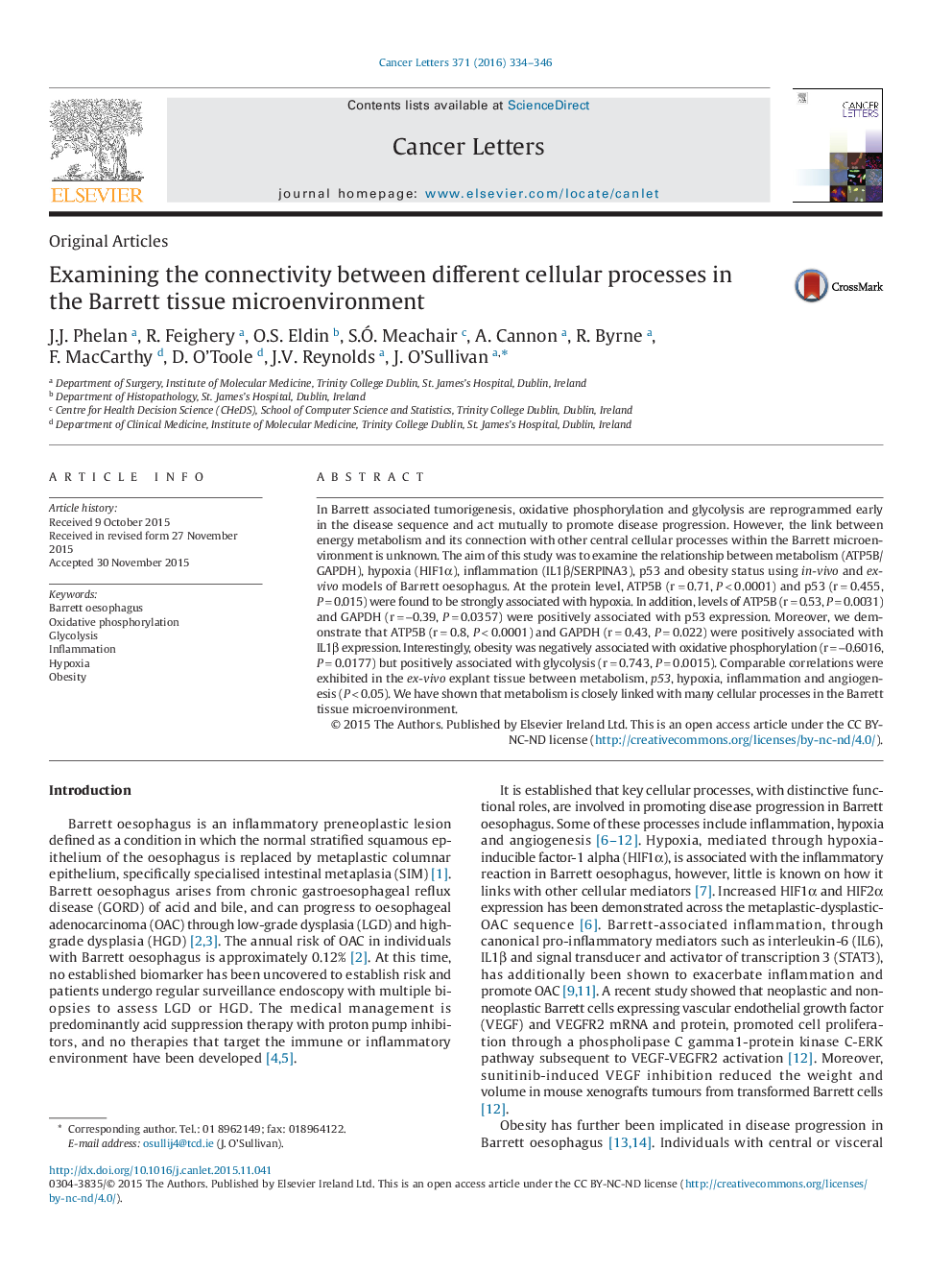| Article ID | Journal | Published Year | Pages | File Type |
|---|---|---|---|---|
| 10899434 | Cancer Letters | 2016 | 13 Pages |
Abstract
In Barrett associated tumorigenesis, oxidative phosphorylation and glycolysis are reprogrammed early in the disease sequence and act mutually to promote disease progression. However, the link between energy metabolism and its connection with other central cellular processes within the Barrett microenvironment is unknown. The aim of this study was to examine the relationship between metabolism (ATP5B/GAPDH), hypoxia (HIF1α), inflammation (IL1β/SERPINA3), p53 and obesity status using in-vivo and ex-vivo models of Barrett oesophagus. At the protein level, ATP5B (râ=â0.71, Pâ<â0.0001) and p53 (râ=â0.455, Pâ=â0.015) were found to be strongly associated with hypoxia. In addition, levels of ATP5B (râ=â0.53, Pâ=â0.0031) and GAPDH (râ=ââ0.39, Pâ=â0.0357) were positively associated with p53 expression. Moreover, we demonstrate that ATP5B (râ=â0.8, Pâ<â0.0001) and GAPDH (râ=â0.43, Pâ=â0.022) were positively associated with IL1β expression. Interestingly, obesity was negatively associated with oxidative phosphorylation (râ=ââ0.6016, Pâ=â0.0177) but positively associated with glycolysis (râ=â0.743, Pâ=â0.0015). Comparable correlations were exhibited in the ex-vivo explant tissue between metabolism, p53, hypoxia, inflammation and angiogenesis (Pâ<â0.05). We have shown that metabolism is closely linked with many cellular processes in the Barrett tissue microenvironment.
Related Topics
Life Sciences
Biochemistry, Genetics and Molecular Biology
Cancer Research
Authors
J.J. Phelan, R. Feighery, O.S. Eldin, S.Ã. Meachair, A. Cannon, R. Byrne, F. MacCarthy, D. O'Toole, J.V. Reynolds, J. O'Sullivan,
